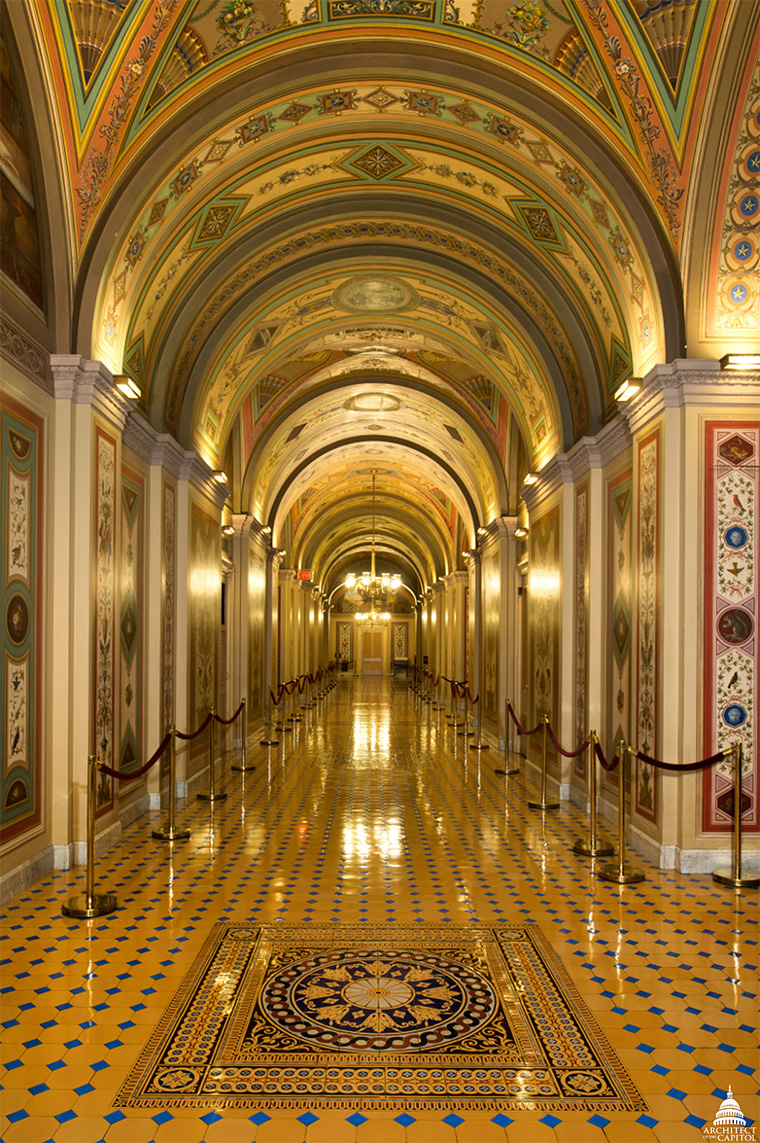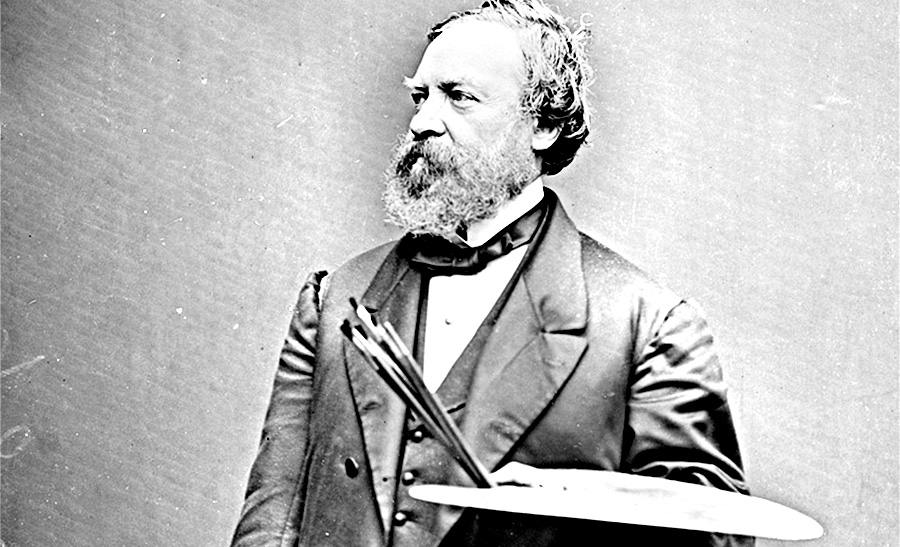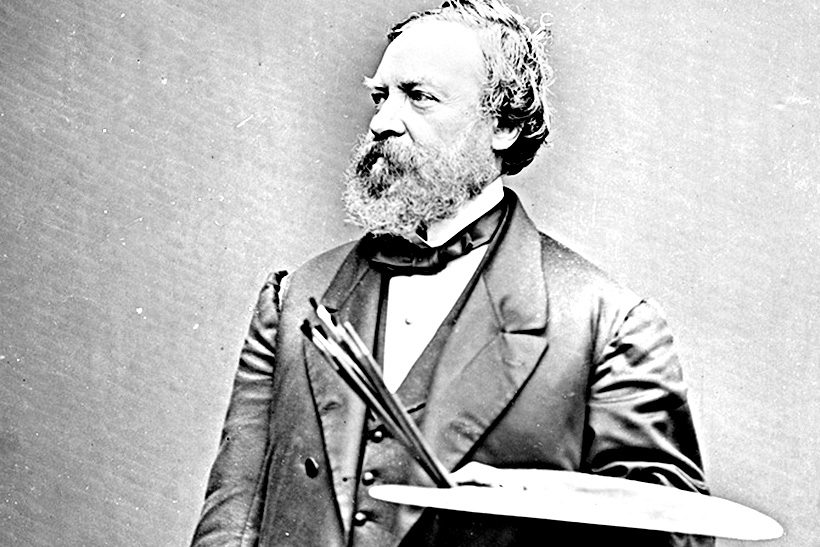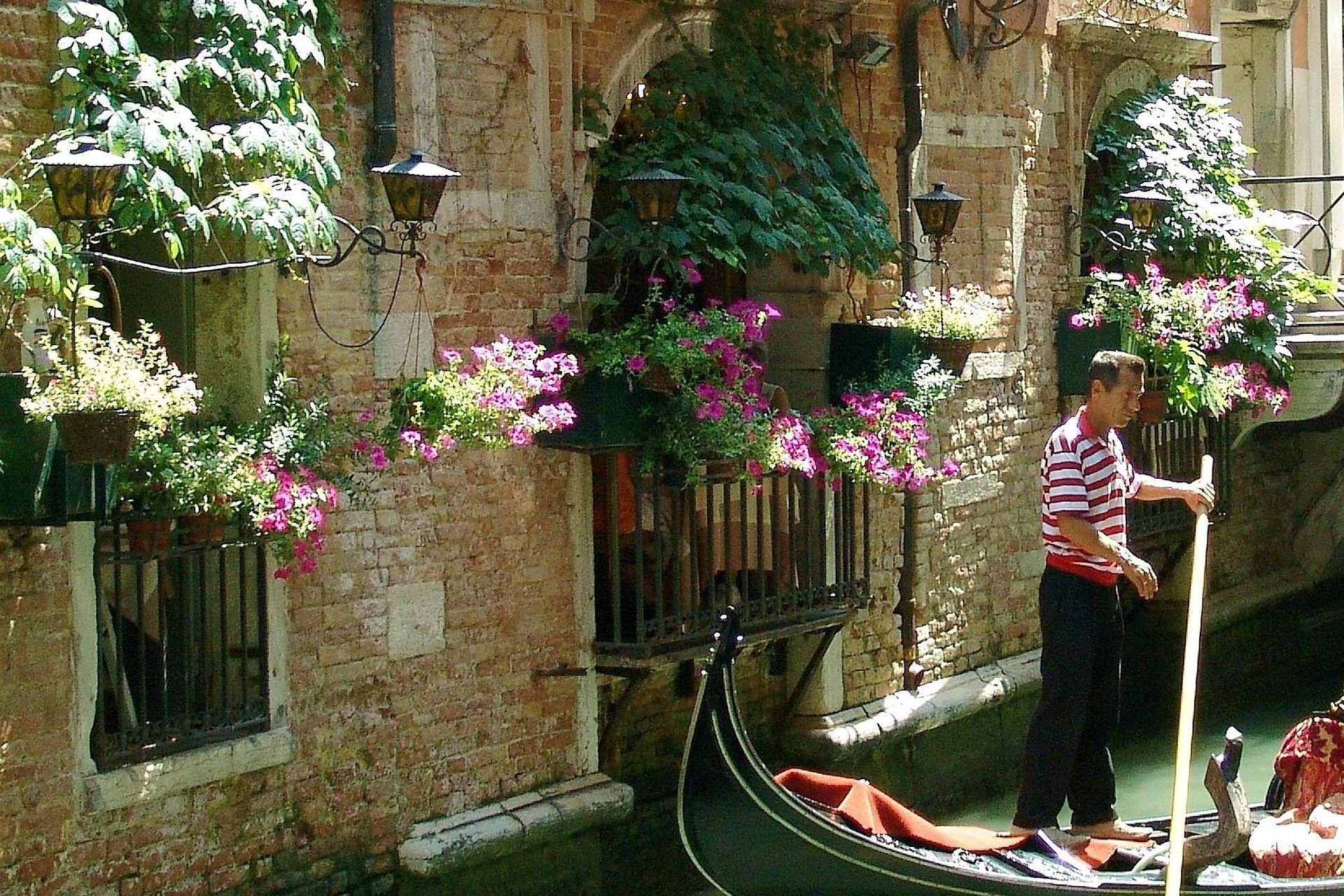Constantino Brumidi: not exactly a household name, and yet he was the man responsible for the decoration of several rooms and walls of the U.S. Capitol in Washington D.C. in the 19th century.
Brumidi’s chief work, the allegorical fresco The Apotheosis of Washington, covers the interior of the dome in the Rotunda, described as the Capitol’s “symbolic and artistic heart.” Encircling the base of the dome, right below the windows, is the Frieze of American History, where Brumidi painted scenes depicting significant events of American history. In addition, several rooms throughout the building are graced with his work and the Brumidi Corridors, on the first floor of the Senate wing, are named after him. Brumidi, an Italian immigrant, sure earned his reputation as “the artist of the Capitol.”
But how did he end up in Washington D.C., tasked with what was at the time (1855) the most ambitious and expensive commission of a federal work of art?
Brumidi’s beginnings in Rome
Brumidi was born in Rome in 1805. At 13, he enrolled at the prestigious Academy of St. Luke, where he was trained in sculpture and painting, including the technique of true fresco, which he would later apply to his work at the Capitol. He emerged as one of Rome’s best artists of the time, decorating the new theater at the villa of the wealthy Torlonia family and working at the Vatican under Pope Gregory XVI, restoring frescoes and painting the official portrait of Pope Pius IX. He received commissions for portraits and frescoes in several churches and palaces.
During the upheaval caused by the short-lived Roman Republic of 1849, Brumidi removed some precious artifacts from churches in order to safeguard them. He was arrested and sentenced to 18 years in prison. After being incarcerated for 13 months, he was pardoned by the Pope, and emigrated to the U.S.
Making a name for himself in the United States
Brumidi arrived in New York in 1852. He became a U.S. citizen five years later, something he was very proud of as his signature on a fresco painted in 1857 in the Capitol’s Hall of the House reveals: “C. Brumidi, Artist, Citizen of the U.S.”

Upon his arrival in the New World, Brumidi got to work right away, through private commissions and painting for cathedrals and churches in various cities, including New York, Philadelphia, Baltimore and Washington. His talent led him to become the chief artist for the new Capitol building, whose expansion had begun in 1850 – he would work on the Capitol from 1855 until his death 25 years later.
The first fresco that Brumidi painted in the Capitol, The Calling of Cincinnatus from the Plow, is housed in Room H-144, then the House Committee on Agriculture Room, now the House Appropriations Committee Room. In it, he depicts a classical event, a retired Roman general recalled to defend his city, seen as parallel to the life of George Washington. His reference to the classical world and use of allegorical figures to draw parallels to American history would be largely used on subsequent frescoes. This is particularly evident in what is considered his masterpiece, The Apotheosis of George Washington, which he painted in 11 months at the end of the Civil War.
‘Michelangelo’ of the Capitol.
In The Apotheosis of George Washington, Brumidi presents George Washington, the first president of the United States, as the father of the country, flanked by the allegorical figures of Liberty and Freedom, surmounted by 13 more allegorical figures representing the 13 original colonies, and surrounded by vignettes pointing to the virtues of American invention and progress.
“Together it shows the history of the Roman Republic as the precursor to American democracy,” explains Eleanor Jones Harvey, senior curator at the Smithsonian American Art Museum. “It presents Washington as presiding over the values that, at mid-century, defined the hopes for this nation.”
To paint the 4,664-square-foot mural, Brumidi lay on his back 180 feet above the floor.
Another major contribution in the Capitol is the frieze depicting major events in American history at the base of the dome, which Brumidi began painting in 1878, when he was 73. While he was working on the scene “William Penn and the Indians,” his chair slipped on the scaffold platform, and he had to cling to a ladder for 15 minutes before being rescued. The next day, he was back at work. Unfortunately, he would not be able to complete the frieze as he died two years later.
Brumidi’s contributions to the Capitol earned him a posthumous Congressional Gold Medal, awarded by the U.S. Congress in 2008. In 2005, on the bicentennial of his birth, a ceremony in the Rotunda celebrated this important Italian-American figure. A portrait bust of the artist, made in 1966, is placed in the Brumidi Corridors.
Brumidi well expressed his pride for and commitment to his work on one of the most important buildings of his adopted nation when he wrote: “I have no longer any desire for fame or fortune. My one ambition and my daily prayer is that I may live long enough to make beautiful the Capitol of the one country on earth in which there is liberty.”































